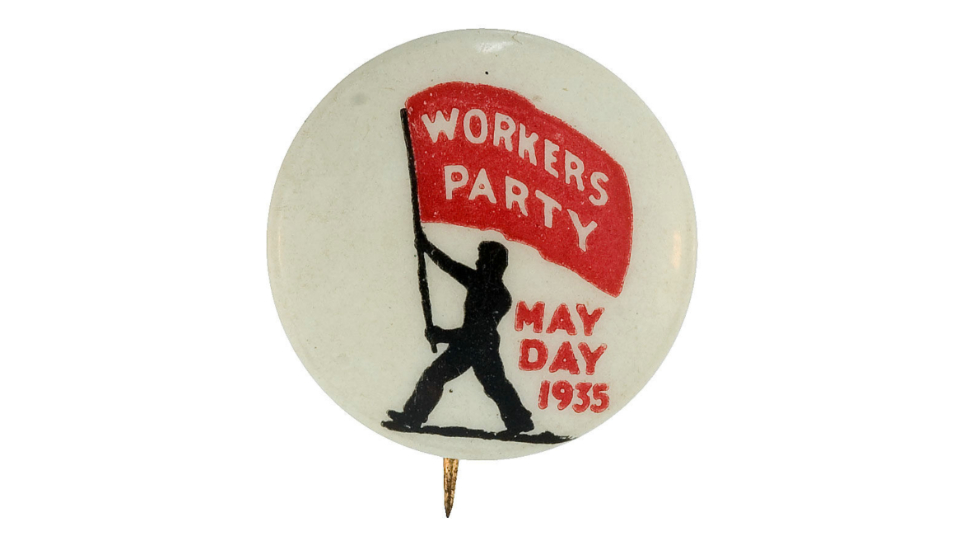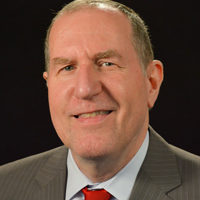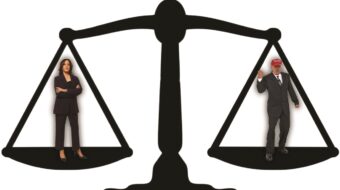
There are a variety of economic classes in the United States today. We have our big capitalists who employ hundreds of thousands of workers, our medium-size capitalists who have hundreds of workers, and our small capitalists who may have anywhere from one to several dozen employees.
Then we have our petty-bourgeoisie, who own their own businesses and farms, but don’t employ workers, managing their business by themselves or with their family members. Most of the members of the gig economy fall into this category.
Finally, we have the vast majority of Americans: the workers—those who work for a salary or wage for someone else.
Despite this wide variety of economic classes, U.S. society is dividing itself more and more into two big antagonistic camps: those who support the capitalists and those who support the workers.
The capitalists long ago recognized this and united themselves into economic associations that protect their interests, associations such as the U.S. Chamber of Commerce.
Workers, too, recognized long ago that our country was dividing itself into two camps and formed their own economic associations: unions.
Each of these many associations fights outside of the normal arena of struggle between an individual capitalist and an individual group of workers in a particular workplace. They fight for the long-term interests of their class.
However, the capitalists are more advanced than the workers in at least one sense: They more clearly recognize the need for a political party.
Now, capitalists have their particular economic interests which they defend through their economic associations like the Chamber of Commerce. But they also have their political interests as well.
Their political interests as a class are to defend the capitalist system of economics. That’s why they created the Democratic and Republican Parties. Both of these parties’ main goal is to defend the economic interests of the capitalist class. This is why so many of our laws and regulations at the federal, state, and local levels, seem to favor the capitalists and capitalism.
Of course, the capitalists are not marching in lockstep. Within the capitalist class, there are huge splits about just how to maintain capitalism. That’s why we have two large capitalist parties in the U.S.
The Republicans, until very recently, have tended to argue that the best way to maintain capitalism is for the government not to get very involved in the economy, to let the pure market determine outcomes in society. They tend to identify with what is called “supply-side economics.”
The Democrats postulate, especially since the election of Franklin D. Roosevelt in 1932, that government should be more involved in the economic system in order to maintain fairness and equity. Else, things might get out of hand and the workers may try to tear down the system itself. The Democrats tend to identify with “Keynesian Economics.”
Recently, the Republican Party, with the 2016 election of Donald Trump as president, has turned to outright fascism, advocating for the elimination of democracy itself. Here’s hoping that the results of the 2022 midterm elections, which were a severe disappointment for Republicans, will turn them away from this path.
So capitalists have solved the class struggle between themselves and their workers by creating both economic associations for the economic struggle and political parties to deal with overarching ideological issues, principally, maintaining capitalism as its economic system.
Workers have taken the first step by forming economic associations to protect their immediate interests. Unions take part in the daily economic struggles to raise wages and salaries, shorten the working day, create safer working conditions, and curb exploitation.
But workers also have common class interests. Workers need a government that puts their interests over that of maintaining the capitalist system. Workers also need a government that will work in their long-term interests by moving towards socialism.
It is only with socialism that all exploitation of the workers ends. But socialism cannot be achieved without political power. To get political power, workers need to develop their own, independent political parties.
As with all op-eds published by People’s World, this article reflects the opinions of its author.












Comments